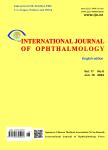Corneal stromal mesenchymal stem cells: reconstructing a bioactive cornea and repairing the corneal limbus and stromal microenvironment
作者机构:Department of OphthalmologyFirst Hospital of Xi'anShaanxi Institute of OphthalmologyShaanxi Provincial Key Lab of OphthalmologyClinical Research Center for Ophthalmology Diseases of Shaanxi Provincethe First Affiliated Hospital of Northwest UniversityXi'an 710002Shaanxi ProvinceChina Open FIESTA CenterGraduate School at ShenzhenTsinghua UniversityShenzhen 518055Guangdong ProvinceChina Biomanufacturing Engineering LaboratoryGraduate School at ShenzhenTsinghua UniversityShenzhen 518055Guangdong ProvinceChina
出 版 物:《International Journal of Ophthalmology(English edition)》 (国际眼科杂志(英文版))
年 卷 期:2021年第14卷第3期
页 面:448-455页
核心收录:
学科分类:1002[医学-临床医学] 100212[医学-眼科学] 10[医学]
基 金:Supported by the National Key R&D Program of China (No.2016YFC1100100) the Key R&D Program of Shaanxi Province (No.2018ZDXM-SF-056) the Health and Family Planning Research Fund Project of Shaanxi Province (No.2016C004) the Key Research and Development Program of Shaanxi Province (No.2019SF-196) the Research Talent Project of Xi’an Municipal Health Commission (No.J201902037)
主 题:corneal stroma-derived mesenchymal stem cells bioactive cornea corneal limbus tissue-engineered active biocornea stromal microenvironment
摘 要:Corneal stroma-derived mesenchymal stem cells(CS-MSCs) are mainly distributed in the anterior part of the corneal stroma near the corneal limbal stem cells(LSCs). CS-MSCs are stem cells with self-renewal and multidirectional differentiation potential. A large amount of data confirmed that CS-MSCs can be induced to differentiate into functional keratocytes in vitro, which is the motive force for maintaining corneal transparency and producing a normal corneal stroma. CS-MSCs are also an important component of the limbal microenvironment. Furthermore, they are of great significance in the reconstruction of ocular surface tissue and tissue engineering for active biocornea construction. In this paper, the localization and biological characteristics of CS-MSCs, the use of CS-MSCs to reconstruct a tissue-engineered active biocornea, and the repair of the limbal and matrix microenvironment by CS-MSCs are reviewed, and their application prospects are discussed.



